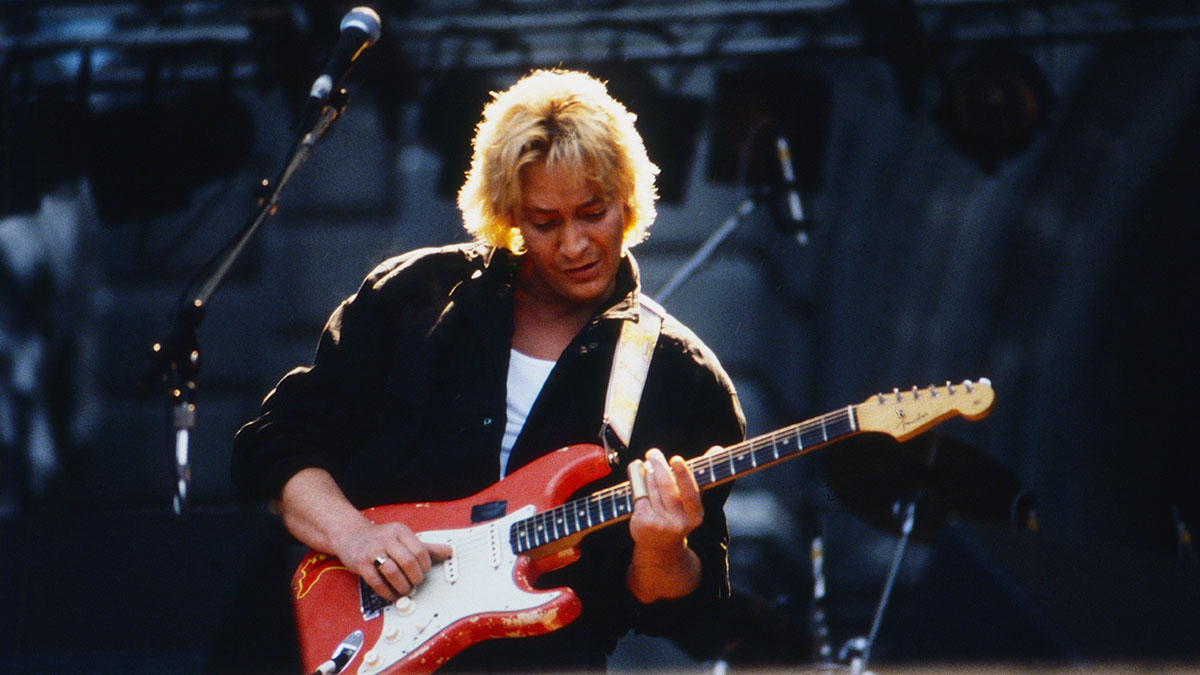
Perhaps a lesser known bluesman to the wider guitar playing community, but by no means less successful than any of his peers, is Mr Chris Rea. Hailing from the UK, Chris has had a rich and successful career, with 25 solo albums and many hit singles to his name.
Originally from Middlesborough, the guitar legend actually started his music career quite late in life. Originally wanting to be a journalist, Chris bought his first guitar in his early 20s, and was inspired in particular by Charley Patton, a well-known slide player on whom Chris based his own approach.
Rea was influenced by Blind Willie Johnson, Sister Rosetta Tharpe, Ry Cooder and Joe Walsh. He was also inspired by the Delta blues movement, in particular citing Muddy Waters.
But Rea’s sound and style are definitely more grounded in British rock, rather than blues in particular, and many of his records testify to that foundational sensibility. But he adopted many styles of music in his songwriting.
Some records sound more classic rock while others have more Motown influence with extended 7th and 9th chords and lush string sections that might be more typically associated with artists like The Temptations. All the while, his distinctive slide guitar was used across all these records giving him his unique blues-pop sound.
In 1974 Rea managed to secure a solo recording deal with Magnet Records after fronting a few local bands, releasing his first single, So Much Love. This led him to further opportunities, including his contribution to Hank Marvin’s album, The Hank Marvin Guitar Syndicate, in 1977.
His own debut release came a year later, with Whatever Happened to Benny Santini? It peaked at No 49 on the Billboard Hot 200, and was there for 12 weeks. The lead single off this record, Fool (If You Think It’s Over) was his most successful song in the USA, reaching No 1 on the Adult Contemporary singles chart and No 12 on the Billboard Hot 100. Despite this success, he’s had no ambitions to tour in the US and still hasn’t worked there to this day.
Chris had a fair bit of success in the European charts, though, but his major breakthrough wouldn’t come until his 10th studio record in 1989. The Road To Hell was his first UK number 1 album, being certified 6x Platinum by the BPI in 2004.
Rea made a return to his blues roots after many years of success with more contemporary pop and rock sounding records. Therefore, for the purposes of our studies on Chris’s playing, we’ll look at examples of his slide guitar style first in a pop-rock context, and then in a more soulful, Motown-inspired track. Enjoy!
Get the tone
Amp Settings: Gain 3, Bass 5, Middle 5, Treble 5, Reverb 4
Any guitar, whether single coils or humbuckers will do the job nicely. You’ll need a slide for these solos, so a guitar with a medium action height will benefit you here. A clean amp on the edge of break-up with a touch of reverb will put you squarely in the sonic ballpark. Either neck or bridge pickup will do the trick, as long as you get a clear, singing tone.
Study One
This solo is a great example of Rea’s style from his pop-rock years. Chris plays everything (including regular lead guitar) in open E tuning, but we are in standard tuning here. The solo is constructed mostly around triads that contain notes all on the same frets, so as to accommodate the slide.
Study Two
This solo is an example of Chris’s playing in a more soulful context. Notice that each idea is a development of what came before. We use the slide to essentially harmonise the original melodic idea using triads to create a choir-like effect that sounds airy and open, unlike conventional guitar strumming.







